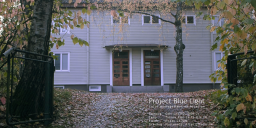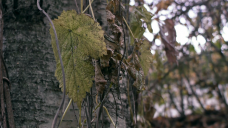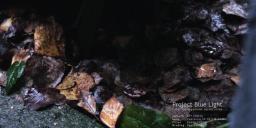
-
Because the subject was 24 mm and 28 mm lenses, I could provide a fresh sample from a inexpensive Tokina RMC 24 f2.8 in low light at full aperture and other relevant information how the image was produced. These lenses have a bit of cinematic quality.
GH1 camera that I used has a problem known as "fixed pattern noise", the texture of the image is a bit flawed and this flaw becomes visible when the camera turns horizontally. So at the moment I can not produce quite as fine looking video as the stills grabbed from the video.

 rmc24f28.jpg1440 x 743 - 309K
rmc24f28.jpg1440 x 743 - 309K -
@Mirrorkisser I have the 20mm FD lens. It works fine on the GH1 I have and is brighter at f2.8 than the two Minolta Rokkor's at f2.8 I have. I should start using it more, to get a better feel for its strengths and weaknesses. If it's inexpensive and you need a 20mm, then I'd give it a go...
-
It may be good to note that if lens is less contrasty it appears brighter. Same kind of result could be had by lifting the levels of a more contrasty lens. Not saying that this has to be the case in the comparison you mentioned, but the Rokkors are known to often have plenty of contrast.
Speaking of the sharpness of vintage wide angle, here is just one more sample from a Tokina 17 mm f3.5 that captured detail nicely. Optical resolution is likely to be the same as in Lumix 14 mm, but without sharpening that could not be turned off for video.

 tokina17pic2.png1440 x 810 - 2M
tokina17pic2.png1440 x 810 - 2M -
The theory is not about all wide angle lens, but RangeFinder ones; I personally noticed really bad results (terrible loss of sharpness not only in the corners, but in 20% of the picture borders) from a leica M mount 35f1.7 Voigtlander supposed to be good , and @bitcrusher shows in his video a highly rated lens performing poorly too.
Using good RF lens is tempting because they are very small and very good for stills (with film bodies). I also have a Voigt 50f1.5, but this one performs well on the GH2.
I can't be sure if my 35mm has a problem, but I think the "theory" is not without foundation
-
@lenuisible Ok, no problem. I did a test with the Canon FD 20mm 2.8 and it is not sharp in corners wide open, but this behavior is shown in full frame still film camera also, maybe it is a bad copy. Just this one shows sharpness problems, all other still lenses i tested perform good. If you can, give a try to your lens in the default rangefinder body, if it performs bad in the original film body it will be lens issue, not gh2 issue, like i found in the Canon 20mm 2.8 test.
-
Hi Guys,
Old Yashica 28mm f2.8 ML or 24mm f2.8 ML. Both must be ML type.
Two real gems surpassed only by their zeiss counterpart for better coating. They come with a Y/C mount.
The 28mm ML is quite cheap.
-
Wide rangefinder lenses are a very different construction as opposed to lenses for SLRs, they are not retrofocus.
You can expect them to perform poorly on electronic sensors because of the angle that the light is coming in, even a Leica M-8 has difficulties:
http://www.l-camera-forum.com/leica-forum/leica-m8-forum/34426-wate-pink-corners.html
So, if you want to go Leica, go Leica-R, not -M.
Rangefinder lenses should be good starting from 50mm.
-
I have an FD 24mm F/2.8 S.S.C. and it's a great lens for the GH2. I wish it was a bit faster though, ofcourse.
-
@LongJohnSilver Can you tell if the ML 24 has similar image to ML 28?
I am eagerly awaiting delivery of a ML 28 f2.8, and if the ML 24 continues the same type of image line as the other lenses, might make me to commit to the much heftier purchase price of the ML 24. These are high contrast lenses that benefit from a little bit of contrast reducing filtering to my experience with ML 35 f2.8 and ML 50 f1.7. Images look similar to comparable Contax Zeiss, other than the lesser coating as was already mentioned.
Speaking of Vivitars and Tokinas, I just tested older Tokina made Vivitar 24 f2.8 (serial starts with 37). It is unfortunately not quite as sharp as a newer Tokina 24 f2.8. This is a pity, because the construction of the Vivitar is really good and solid and feels to the hand like a "real" lens. There are Vivitar 24 and 28 mm lenses labeled as Close Focus, and they are supposedly sharp even wide open. When available their price is the same as comparable Nikkors, though.
-
@aki_hartikainen Nice to know you are using Yashica lens as me. I thought I was the only one here! I think a lot of people here is somehow victim of a lock-in fallout for Canon with their lenses :)
The Yashica 24mm f2.8 ML is probably one of the best of the entire Yashica set along with the 28mm F2.8 ML and your 50mm f.17. On a blind comparison it's very difficult seeing differences from the Zeiss distagon counterpart. And the price... I have the 24, 28 nad the 50mm f1.4 but the 1.7 is better than mine. 1:1 with the Zeiss 1.7 and maybe better than the Canon 50mm 1.4 but at this level it's really a question of personal taste. Actually it's difficult to exploit these lens characteristics on the GH2 poor photo performance but if you do a quick Google search is plenty of sources of these lens on FF camera.
Here a link in Italian language with a quick review of all the Yashica lenses. Waht to buy and what to avoid. Should be easy reading it with Google translate.
http://www.nadir.it/ob-fot/YASHICA_LENS.htm
Byeeeee
-
Thanks for the info. I received a Yashica ML 28 f2.8 in mint condition today and was eager to test it, but from the first moment I could notice that it did not have that great "snap" focus of the Yashica ML 35 f2.8 or even the Yashica ML 35-70 f3.5-4.8 zoom lens.
Everything else is great, contrast is very high and blacks go to black very quickly. Sharpness at full aperture f2.8 falls a bit short. However, it is a 25 year old inexpensive lens and there may be sample variations. Plus I may be demanding too much. Also, to make the bokeh match might mean giving up a little bit of the sharpness. Resistance to flare is a lot better than Minolta MD 28 f2.8. Minolta is sharper but bokeh leaves something to be desired and there is little resistance to flare.
So the ML 28 f2.8 may not be the game changer for me and the search is still on for the perfect 24 and 28 mm lens. Tokina RMC 24 f2.8 is close, though, but falls just a tiny bit short. If this becomes a great challenge, then it might be easier to change the camera to a one with wider sensor. I already have several lenses starting from 35 mm that have made the cut for cinema production, ML 35 f2.8 being one.
One option is to try a slower 28 mm lens for hopefully improved sharpness at full aperture and there are several of them available before going the big buck Leica, Zeiss or Nikon route for sharp 24 and 28 mm.
-
I could not resist posting one more sample from a Tokina RMC 24 f2.8 from yesterday. My current thinking is that it is probably the closest to a high quality 24 mm lens in sub 100 eur category. If there is a better one in that price range, I would like to know about it. It has a little bit of barrel distortion, for which a suitable corrections file could be developed. Out of focus areas can sometimes be very slightly undefined but this is probably common to all wide angles. Sample variations could exist. A sharp copy seems to be rather sharp like this one. The camera becomes a quality limiting factor, the lens could give a bit more.

 rmc24f28.png1440 x 612 - 2M
rmc24f28.png1440 x 612 - 2M -
I have a Nikkor 24mm AIS that I've yet to find any flaws with. And also a handful of decent 28mm M42 lenses which work fairly well except in some bright high contrast situations.
-
Thanks for the test, all images looked rather good to me. It's interesting to note that perhaps due to the yellowing the Takumar picks up slightly different hues. Similar effect to what I try to achieve using color compensating filters.
I took the Yashica ML 28 f2.8 out in better light and stopped down to f4 it becomes sharp. Images are zeiss-like but the bokeh of the 28 mm is not quite as nice as the 35 mm. I have noticed this same from the Minolta MD line of lenses. One sample from the ML 28 @ f4 grabbed from video and very quickly graded in Photoshop.

 ml28f4.png1440 x 810 - 2M
ml28f4.png1440 x 810 - 2M -
I can highly recomend the Nikkor 28/2 AIS - lovely old school glass.
Superb lens. It's AI not AIS, AIS is 2.8. These are legendary lenses.
I have a mint Nikkor 28mm f2. I can let it go for $350 + shipping + paypal if anyone is interested. They go for $400+ on ebay,

 Nikkor-28mm-f2.jpg1920 x 1278 - 1M
Nikkor-28mm-f2.jpg1920 x 1278 - 1M -
Very nice. I suppose this was at full aperture considering the narrow DOF? Do you happen to know if the Nikkor 24 f2 shares similar characteristics? I will consider your offer, however I might be more inclined to get the 24 f2 for the GH cameras, if it looked as nice as that. Also, I am considering getting a camera with wider sensor. The 35 mm Distagon look is just so close to the "big picture" look.
-
@aki_hartikainen I have no experience with 24mm. The shot above was at f2.8 on D700. The drawing at f2 is better.
http://www.flickr.com/groups/ai28mmf20/pool/with/5084987374/#photo_5084987374
-
Thanks for the link. Those are super images. What a pity that the AVCHD can not duplicate such gamut.
-
i have a Vivitar 28mm f2.0 Its not the Kiron version and it is pretty sharp if you stop it down 1 notch, at f2.0 it blooms a bit. Got it dirt cheap, but its one of my favorite old manual lenses.
-
@ki_hartikainen I second your observation. Bokeh of the Minolta 35mm 1:1.8 is stunning, while the 28mm 2.8 (or the super-sharp 24) is only so-so.
But the Minolta 28mm 1:2.0 looks very good if stopped down one step.
-
That's good to hear, looking forward to acquire some of the mentioned lenses. Recently I discovered that the Minolta Macro Rokkor 50 mm f3.5 belongs to the cinematic class. I read that Minolta did not recommend using other MD close focus lenses for archival purposes, but the Macro Rokkors instead. This has to mean higher optical standards. Macro Rokkor 50 @ f3.5 turns the humble GH1 into a cinematic camera, atleast for suitable scenes.
If it is not out of line, at fourseasonshd.com front page I updated the video and now has several scenes from several of the aforementioned lenses in action. There are both heavily graded and ungraded scenes. Tokina RMC 24 f2.8 is the "lamest", but only by hair. Yashica ML 35 f2.8 and Macro Rokkor 50 f3.5 turn the GH1 into a better camera than intended.
To be able to use these lenses on a wider sensor would open opportunities for cinematic scenes, I'm sure.
-
The Macro Rokkor is great, but we are definitely not talking "wide" here any more, so let's keep the topic.
-
It would be wider on a full frame. But I see the point and back to the topic (somewhat). I just received a mint Pentacon 30 f3.5. This is very highly regarded by many photographers and is made in East Germany but using the original Meyer-Lydith design. You could read something here: http://www.mflenses.com/pentacon-30mm-f35-lens-review.html
Lens construction is not ideal, every ring seems to have a bit of play and the focus is a bit stiff. This could become a problem with follow focus, but that remains to be seen. It was already getting dark, so no good test images could be made. But I got this one rather filmic contrast for one image using a little bit of curves and levels. It is noisy at high ISO.
I should refrain from posting more comments or images before I know more about this lens, but certainly looks interesting. The angle of view is interesting and price is literally a tenner or two.

 pentacon30f35.jpg1440 x 686 - 631K
pentacon30f35.jpg1440 x 686 - 631K -
They didn't have good lubricants at the time and it probably got stiff from coagulation.
Cleaning and new lubrication might help a lot, I did that with my old Jupiter-9 and it's focus is very smooth now.
-
Yes, it is certainly worth investigating and I will get to that shortly.
I also seem to have one Kiron made Vivitar 28 mm f2 (serial starts with 22). While it can not be considered very high quality image at wide open, it is atleast bright. The bokeh is "interesting", to put it mildly and out of focus in the front shows ghosting. But even that kind of image may have some limited use. I seem to have no sample images at all, so it looks like I gave up on it. That does not mean it could not be used for something. And it sharpens when stopped down.
The FD version can be stopped down by half aperture and becomes more useful already. MD version does not have half stop between 2 - 2.8.
Howdy, Stranger!
It looks like you're new here. If you want to get involved, click one of these buttons!
Categories
- Topics List23,992
- Blog5,725
- General and News1,354
- Hacks and Patches1,153
- ↳ Top Settings33
- ↳ Beginners256
- ↳ Archives402
- ↳ Hacks News and Development56
- Cameras2,367
- ↳ Panasonic995
- ↳ Canon118
- ↳ Sony156
- ↳ Nikon96
- ↳ Pentax and Samsung70
- ↳ Olympus and Fujifilm101
- ↳ Compacts and Camcorders300
- ↳ Smartphones for video97
- ↳ Pro Video Cameras191
- ↳ BlackMagic and other raw cameras116
- Skill1,960
- ↳ Business and distribution66
- ↳ Preparation, scripts and legal38
- ↳ Art149
- ↳ Import, Convert, Exporting291
- ↳ Editors191
- ↳ Effects and stunts115
- ↳ Color grading197
- ↳ Sound and Music280
- ↳ Lighting96
- ↳ Software and storage tips266
- Gear5,420
- ↳ Filters, Adapters, Matte boxes344
- ↳ Lenses1,582
- ↳ Follow focus and gears93
- ↳ Sound499
- ↳ Lighting gear314
- ↳ Camera movement230
- ↳ Gimbals and copters302
- ↳ Rigs and related stuff273
- ↳ Power solutions83
- ↳ Monitors and viewfinders340
- ↳ Tripods and fluid heads139
- ↳ Storage286
- ↳ Computers and studio gear560
- ↳ VR and 3D248
- Showcase1,859
- Marketplace2,834
- Offtopic1,320







